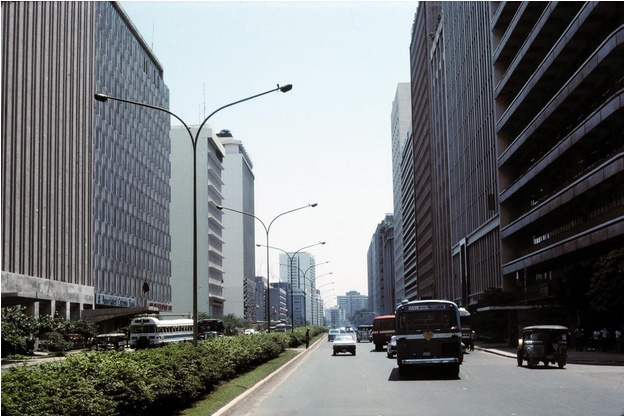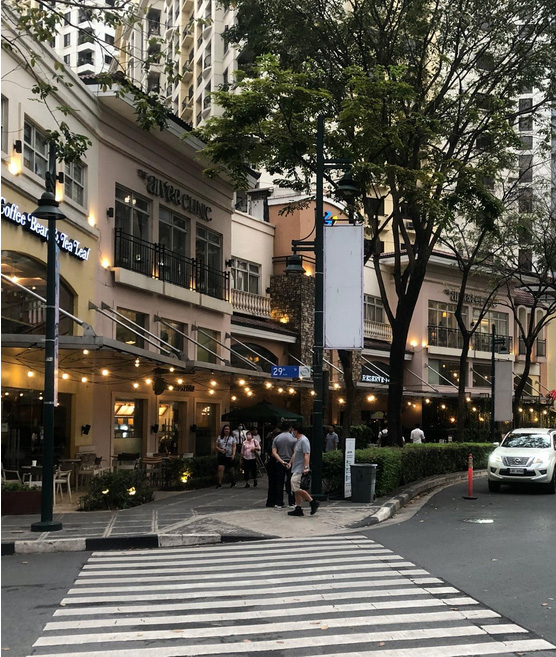City street life
I’ve had the privilege of working in Makati for over 35 years and I’ve seen its transformation as a business district through the decades.
The Makati central business district (CBD) is not only expressed by its glitzy skyscrapers and shopping malls. To a large extent, it is a realm defined by the fine-grained fabric of activities happening on the ground.
In the late ’80s, Makati CBD epitomized the planning paradigm of single-use zoning, which was adopted from the United States. This planning approach required rigid segregation of uses, separating homes from businesses and shopping. Ayala Avenue was patterned after Wall Street, an address exclusively for offices, catering to the largest corporations in the country.
Makati was thus a prestigious location and working in the CBD was a sign of individual achievement. There was one problem though: the CBD was a ghost town after hours, devoid of people and activities at night and on weekends.
Fast forward to the present, the streets of the CBD are now bustling with food outlets, coffee shops, restaurants, and places to hang out. This was all part of the evolution of the city, but I believe there were three important events that enabled the transformation.
Densification
Makati CBD’s old restrictions encouraged multi-story structures but capped the heights to 12 floors in some streets.
The concept of floor area ratio (FAR) was introduced in the early ’90s which allowed lot owners to build as high as the airport authorities would allow if the structures were within the prescribed FAR.
When restrictions on maximum building heights were amended, developers were able to respond to increasing land values and demand for space in the CBD. This development not only saw the first tall structures being built in the CBD, but also increased the total population per hectare it served, which in turn fueled the demand for downtown conveniences and services.
Market acceptance of high-rise living
It took a while for condominium living to take hold in the Philippines.
There was initial resistance to high-rise living and some hesitance to the concept of property ownership under a Condominium Certificate of Title (what is owned is actually the airspace inside an enclosed unit) instead of the more traditional Transfer Certificate of Title (one has ownership of the land and the space above and below it).
The eventual mainstream acceptance of condominium living was a big conceptual leap for the market. For the CBD, it meant higher resident population, which translated to higher demand for services and outlets such as convenience stores, groceries, eateries, salons, and the like.
Retail liberalization
Previous single-use restrictions explicitly prohibited retail and restaurants at the ground floor of the buildings.
In line with the prevailing paradigm of segregation and exclusion, all shopping, dining, and entertainment activities were concentrated in the shopping center (then called Makati Commercial Center), allowing for the monopolization of commercial rents, and resulting in reduced vitality for the rest of the business district. Some enterprising building owners circumvented this restriction by putting food outlets in a partial basement, half a floor below the street level.
The eventual relaxation of the restriction allowed a percentage of the buildings’ gross floor area to be used for retail and food outlets–hence, the current situation where we see lively cafes and restaurants along the streets of the CBD.
Economic vitality
All in all, the combination of intensification, densification, and liberalization led to a more even and varied distribution of economic activity and vitality within the CBD. These addressed the evolving needs of an increasingly urban population.
The confluence of these events enabled the transformation of the CBD into one that is richer in mix, more varied in use, and more vibrant in utilization.
Today, the formula of energizing streets and open spaces with street-facing retail has become a key characteristic of subsequent business districts such as Eastwood, Bonifacio Global City and others. Ground level retail is even mandated in some developments.
The presence of shops and restaurants along the street has not only shaped patterns of downtown consumption but also the nature of movement in our business centers. They have allowed the street to be part of the destination and shops to become generators of pedestrian mobility, blurring the lines between the function of these elements.
What is interesting is that this idea isn’t new at all. Traditional cities, before the dawn of shopping malls and prevalence of cars, had commercial activity on the street. That is what we see in places like Binondo, Escolta, or even the streets just outside today’s CBDs.
Resiliency and diversity
Today’s business districts even combine the curated retail mix of shopping malls with the random, organic, and market-driven streetside shops. Many shopping centers tried to emulate streetside shopping and combine outdoor-oriented shops with more conventional enclosed malls such as Uptown Mall. This formula enabled some malls to thrive even through the pandemic. Resiliency requires diversity.
Retail is a subsystem nested within the larger urban ecosystem. To thrive, it needs to rely on the explicit and implicit interdependencies of activities that occur in varying scales.
It is common knowledge that retail complements most land uses—residential, offices, schools, streets, parks. They give life to these spaces and in turn, they benefit from the people occupying these areas. The positive feedback loop created provides the richness of life and activity within our urban realm.
Designers that are serious about creating meaningful places seek that elusive spark that can catalyze a banal space into a magnet for people. Many strive to make a place “Instagrammable” by resorting to superficial, cosmetic tactics which sometimes fail in connecting people to a place, other than just for a photo op.
The real opportunity in creating meaningful places lies literally beneath our feet—when we start to see the street’s true role: not just for conveyance but as the setting for the city’s informal public life.
The author is founder and principal of JLPD, a master planning and design consultancy practice. Visit www.jlpdstudio.com


